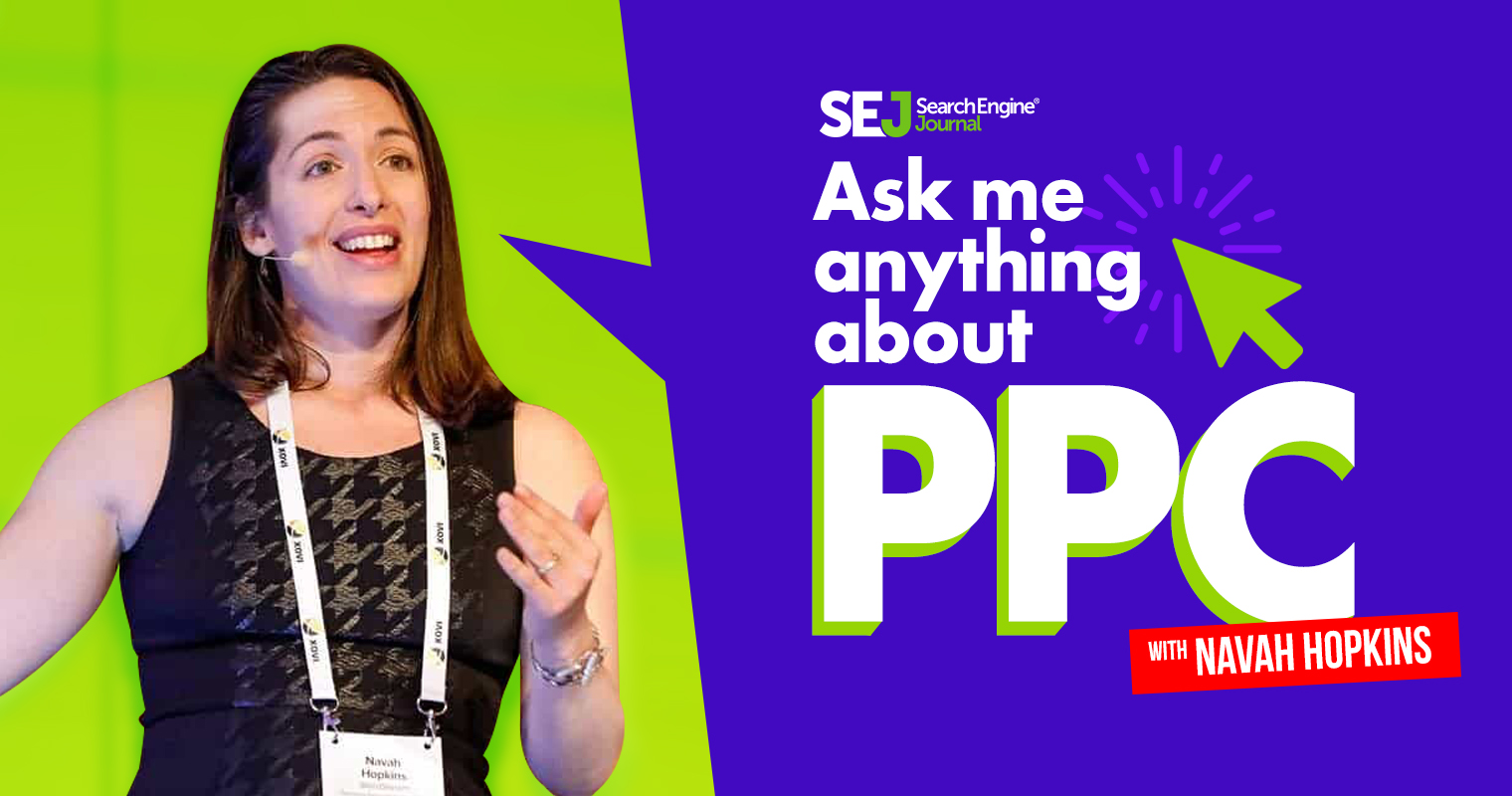SEO
How Can I Build On SEO Knowledge To Be Better In PPC?

Pay-per-click (PPC) advertising and search engine optimization (SEO) often end up siloed.
This causes friction between teams, questions about attribution, and often self-sabotaging strategies to get in the way of scalable profit.
I love this question seeking to build PPC empathy and collaborate on SEO initiatives. Barouyr in Yerevan, Armenia, asks:
“If someone knows about SEO and in general about marketing (customer personas, target marketing), and has a very basic knowledge of PPC, where should he start to understand how to construct a PPC campaign for his company?”
This post touches on concepts where SEO/PPC align and can empower each other and makes recommendations for further exploration.
Keyword Theory: Active Targets Vs. Passive Targets
Keyword research, management, and strategy are part of SEO and PPC.
However, the tasks associated and criteria for electing a keyword are slightly different.
One of the biggest differences is PPCs need to account for close variants as opposed to perfect syntax.
You won’t need to bid on everything as close variants pick up slight variations on keywords as well as implied terms.
For example, bidding on the keyword phrase “balanced dog trainers near me” would allow you to come up for the following terms on all match-types:
- “dog trainers for aggressive dogs”
- “[location] dog trainers”
- “dog training near me”
In PPC, advertisers are concerned with:
- Auction Price: Is this keyword the best cost-to-benefit variant and do I make enough to justify costs?
- Competitiveness: Will everyone be going for this variant?
- Inclusivity: Will this variant pick up the ways of searching I need it to?
- Structure: Does this keyword fit my account structure or does it require major changes?
Factoring in these questions into keyword research will help the work translate to paid efforts.
Deciding what you actively target vs. allowing to passively target through close variants will come down to cost, competitiveness, and search volume.
Read more on keyword theory here.
Dynamic Search Ads: Benefit From Your Well-Optimized Site
Dynamic Search Ads (DSAs) are a PPC staple – they rely on Google/Microsoft crawling your site to come up with ad headlines and the best landing page based on the search term.
If the ad algorithm is able to correctly comprehend the content, you know you’ve done a good job SEOing the site.
If it struggles to come up with the right categories, you might need to adjust your tagging and site structure.
Leveraging DSA can be a great way to start with PPC because:
- DSA campaigns/ad groups will teach you how prospects search.
- You’ll be able to cover more parts of your business with one budget.
- The SEO investments can yield even more return through DSA campaign performance.
DSA can be set up as a stand-alone campaign or added to existing campaigns.
It’s important to note that Google Ads allows for mixed campaigns, while Microsoft does not.
If you end up importing your Google campaigns to Microsoft, be sure to opt for DSA to be split from the campaign.
Dig deeper into Dynamic Search Ads here.
Conversion Tracking: Understanding ROI From A Single Source Of Truth
Conversion tracking teaches you what parts of your campaign are driving value and which are falling short.
Google Analytics is helpful to track conversions across disciplines.
As an SEO expert, you’re likely used to using Analytics goals and events.
Advertisers have a choice – they can either use ad platform conversion tracking (which is separate code), or import from Google Analytics.
You’ll want to use Google Analytics in most cases because:
- Consistency in reporting and valuation of events.
- No additional code is needed on the site.
- More advanced conversion events might be needed.
Using Google Analytics also helps with attribution.
Ad platforms have been moving away from last-click and concrete conversions.
By leveraging analytics attribution models, you can use the same source of truth for all and incorporate conversion modeling into all reporting.
Landing Page Theory: Guide The User To Profit Without Sabotaging SEO
The hardest shift in strategic thinking will be landing pages.
In SEO, content must be rich, and navigation bars help technical SEO gains.
In PPC, content needs to be focused on only the most crucial insights with as little opportunity for the user to do anything other than the conversion action.
One of the best ways to handle this is to direct PPC traffic to subdomain.
This will allow you to abide by PPC rules of engagement without compromising your SEO.
Cumulative Layout Shift (CLS) impacts PPC too (can negatively hurt quality score), so on page CRO still needs to wait at least five (ideally eight or more) seconds before triggering.
Takeaways
Most SEO strategies pave the way for PPC empathy and you absolutely don’t need to start over.
Just be mindful that you ideally want to separate the landing page experiences and use a single source of truth for conversions and reporting.
Have a question about PPC? Submit via this form or tweet me @navahf with the #AskPPC hashtag. See you next month!
More resources:
Featured Image: Paulo Bobita/Search Engine Journal
SEO
Google Declares It The “Gemini Era” As Revenue Grows 15%

Alphabet Inc., Google’s parent company, announced its first quarter 2024 financial results today.
While Google reported double-digit growth in key revenue areas, the focus was on its AI developments, dubbed the “Gemini era” by CEO Sundar Pichai.
The Numbers: 15% Revenue Growth, Operating Margins Expand
Alphabet reported Q1 revenues of $80.5 billion, a 15% increase year-over-year, exceeding Wall Street’s projections.
Net income was $23.7 billion, with diluted earnings per share of $1.89. Operating margins expanded to 32%, up from 25% in the prior year.
Ruth Porat, Alphabet’s President and CFO, stated:
“Our strong financial results reflect revenue strength across the company and ongoing efforts to durably reengineer our cost base.”
Google’s core advertising units, such as Search and YouTube, drove growth. Google advertising revenues hit $61.7 billion for the quarter.
The Cloud division also maintained momentum, with revenues of $9.6 billion, up 28% year-over-year.
Pichai highlighted that YouTube and Cloud are expected to exit 2024 at a combined $100 billion annual revenue run rate.
Generative AI Integration in Search
Google experimented with AI-powered features in Search Labs before recently introducing AI overviews into the main search results page.
Regarding the gradual rollout, Pichai states:
“We are being measured in how we do this, focusing on areas where gen AI can improve the Search experience, while also prioritizing traffic to websites and merchants.”
Pichai reports that Google’s generative AI features have answered over a billion queries already:
“We’ve already served billions of queries with our generative AI features. It’s enabling people to access new information, to ask questions in new ways, and to ask more complex questions.”
Google reports increased Search usage and user satisfaction among those interacting with the new AI overview results.
The company also highlighted its “Circle to Search” feature on Android, which allows users to circle objects on their screen or in videos to get instant AI-powered answers via Google Lens.
Reorganizing For The “Gemini Era”
As part of the AI roadmap, Alphabet is consolidating all teams building AI models under the Google DeepMind umbrella.
Pichai revealed that, through hardware and software improvements, the company has reduced machine costs associated with its generative AI search results by 80% over the past year.
He states:
“Our data centers are some of the most high-performing, secure, reliable and efficient in the world. We’ve developed new AI models and algorithms that are more than one hundred times more efficient than they were 18 months ago.
How Will Google Make Money With AI?
Alphabet sees opportunities to monetize AI through its advertising products, Cloud offerings, and subscription services.
Google is integrating Gemini into ad products like Performance Max. The company’s Cloud division is bringing “the best of Google AI” to enterprise customers worldwide.
Google One, the company’s subscription service, surpassed 100 million paid subscribers in Q1 and introduced a new premium plan featuring advanced generative AI capabilities powered by Gemini models.
Future Outlook
Pichai outlined six key advantages positioning Alphabet to lead the “next wave of AI innovation”:
- Research leadership in AI breakthroughs like the multimodal Gemini model
- Robust AI infrastructure and custom TPU chips
- Integrating generative AI into Search to enhance the user experience
- A global product footprint reaching billions
- Streamlined teams and improved execution velocity
- Multiple revenue streams to monetize AI through advertising and cloud
With upcoming events like Google I/O and Google Marketing Live, the company is expected to share further updates on its AI initiatives and product roadmap.
Featured Image: Sergei Elagin/Shutterstock
SEO
brightonSEO Live Blog

Hello everyone. It’s April again, so I’m back in Brighton for another two days of Being the introvert I am, my idea of fun isn’t hanging around our booth all day explaining we’ve run out of t-shirts (seriously, you need to be fast if you want swag!). So I decided to do something useful and live-blog the event instead.
Follow below for talk takeaways and (very) mildly humorous commentary. sun, sea, and SEO!
SEO
Google Further Postpones Third-Party Cookie Deprecation In Chrome

Google has again delayed its plan to phase out third-party cookies in the Chrome web browser. The latest postponement comes after ongoing challenges in reconciling feedback from industry stakeholders and regulators.
The announcement was made in Google and the UK’s Competition and Markets Authority (CMA) joint quarterly report on the Privacy Sandbox initiative, scheduled for release on April 26.
Chrome’s Third-Party Cookie Phaseout Pushed To 2025
Google states it “will not complete third-party cookie deprecation during the second half of Q4” this year as planned.
Instead, the tech giant aims to begin deprecating third-party cookies in Chrome “starting early next year,” assuming an agreement can be reached with the CMA and the UK’s Information Commissioner’s Office (ICO).
The statement reads:
“We recognize that there are ongoing challenges related to reconciling divergent feedback from the industry, regulators and developers, and will continue to engage closely with the entire ecosystem. It’s also critical that the CMA has sufficient time to review all evidence, including results from industry tests, which the CMA has asked market participants to provide by the end of June.”
Continued Engagement With Regulators
Google reiterated its commitment to “engaging closely with the CMA and ICO” throughout the process and hopes to conclude discussions this year.
This marks the third delay to Google’s plan to deprecate third-party cookies, initially aiming for a Q3 2023 phaseout before pushing it back to late 2024.
The postponements reflect the challenges in transitioning away from cross-site user tracking while balancing privacy and advertiser interests.
Transition Period & Impact
In January, Chrome began restricting third-party cookie access for 1% of users globally. This percentage was expected to gradually increase until 100% of users were covered by Q3 2024.
However, the latest delay gives websites and services more time to migrate away from third-party cookie dependencies through Google’s limited “deprecation trials” program.
The trials offer temporary cookie access extensions until December 27, 2024, for non-advertising use cases that can demonstrate direct user impact and functional breakage.
While easing the transition, the trials have strict eligibility rules. Advertising-related services are ineligible, and origins matching known ad-related domains are rejected.
Google states the program aims to address functional issues rather than relieve general data collection inconveniences.
Publisher & Advertiser Implications
The repeated delays highlight the potential disruption for digital publishers and advertisers relying on third-party cookie tracking.
Industry groups have raised concerns that restricting cross-site tracking could push websites toward more opaque privacy-invasive practices.
However, privacy advocates view the phaseout as crucial in preventing covert user profiling across the web.
With the latest postponement, all parties have more time to prepare for the eventual loss of third-party cookies and adopt Google’s proposed Privacy Sandbox APIs as replacements.
Featured Image: Novikov Aleksey/Shutterstock
-

 PPC7 days ago
PPC7 days ago19 Best SEO Tools in 2024 (For Every Use Case)
-
SEARCHENGINES6 days ago
Daily Search Forum Recap: April 19, 2024
-

 WORDPRESS7 days ago
WORDPRESS7 days agoHow to Make $5000 of Passive Income Every Month in WordPress
-

 WORDPRESS5 days ago
WORDPRESS5 days ago13 Best HubSpot Alternatives for 2024 (Free + Paid)
-

 SEO7 days ago
SEO7 days ago25 WordPress Alternatives Best For SEO
-

 MARKETING6 days ago
MARKETING6 days agoBattling for Attention in the 2024 Election Year Media Frenzy
-

 WORDPRESS6 days ago
WORDPRESS6 days ago7 Best WooCommerce Points and Rewards Plugins (Free & Paid)
-

 AFFILIATE MARKETING7 days ago
AFFILIATE MARKETING7 days agoAI Will Transform the Workplace. Here’s How HR Can Prepare for It.
















You must be logged in to post a comment Login